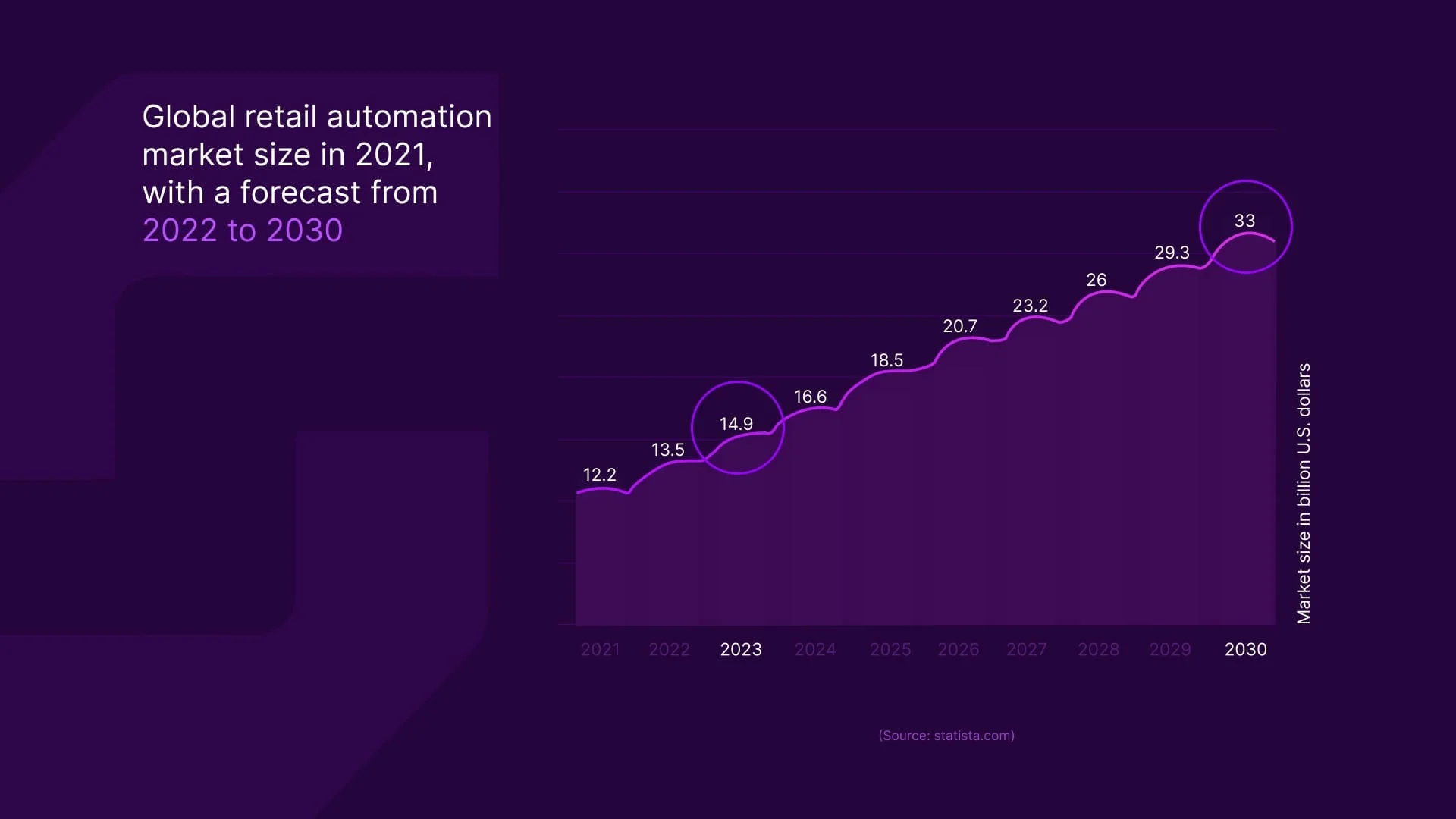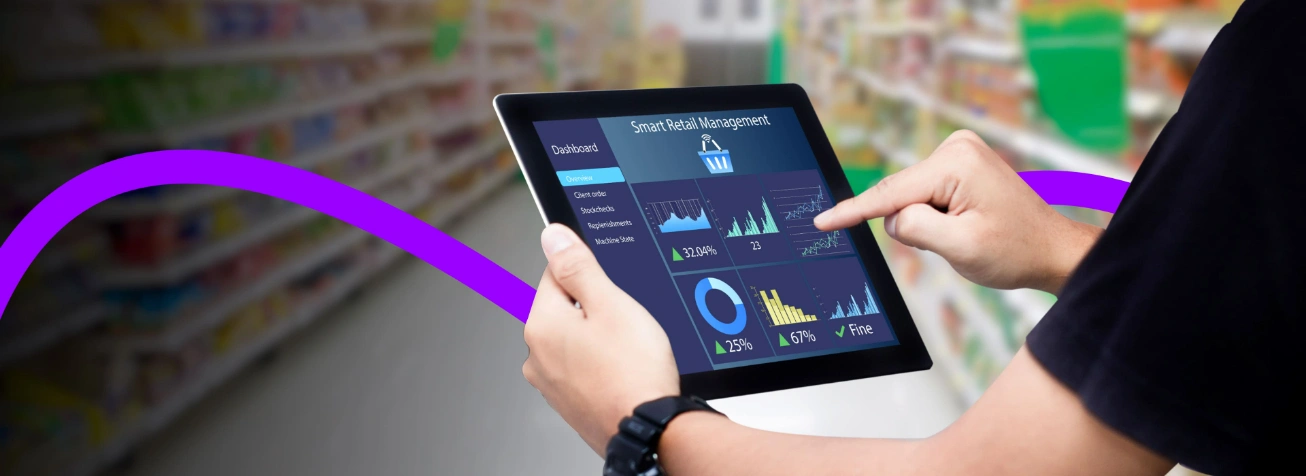The Power of Data Visualization Using Tableau
Automation in Retail Enhancing Efficiency and Customer Satisfaction
Introduction:
Automation in the retail industry acts as a catalyst for digital transformation, streamlining processes, operations, and management. In this article, we explore the various facets of automation in retail, delving into its role in enhancing efficiency and customer satisfaction.
Defining Automation:
Automation leverages technological advancements to achieve desired outcomes with minimal human input. Innovative tools, software, and technologies are employed to automate repetitive tasks, ensuring a seamless and risk-free work environment in the retail sector.
Challenges in the Retail Sector:
The retail sector faces numerous challenges, including changing customer demands, supply chain risks, cost management, cybersecurity threats, and more. Automation serves as a solution by integrating software and tools to streamline operations, ensuring consistency, and effectively managing time.
Understanding Automation in Retail:
Automation in retail involves the application of innovative technologies to perform repetitive tasks, minimizing human intervention. It acts as the foundation for enhancing agility, efficiency, reducing costs, and improving customer experiences. Chatbots, personalized emails, and Robotic Process Automation (RPA) are prominent tools addressing evolving customer expectations.

Key Statistics:
- The global retail automation market is estimated to be worth approximately 14.9 billion USD in 2023, projected to grow to 33 billion USD by 2030.
- AI tools in retail operations had a market value of 4.84 billion USD in 2021, expected to reach 31.18 billion USD by 2028 globally (statista).
Impact on Efficiency and Customer Satisfaction:
Retail automation surpasses manual operations by addressing challenges inherent in a competitive market. It enhances transparency, predicts demand for inventory management, and boosts efficiency and customer satisfaction. Cost reduction is a significant benefit, achieved by replacing manual labor with automated tools, eliminating stress on profit margins.
Cost Management Areas Affected by Automation:
- Inventory management: Optimizes sales and profit.
- Customer service: Promotes time management and cost savings.
- Automated order processing: Lowers the cost of manpower integration.
Streamlined Processing:
Automation reduces reliance on manual labor and traditional systems, predicting retail trends and managerial operations through data analytics. It streamlines online retail functions, minimizing human errors in handling repetitive tasks, and facilitates strategies like ERP, chatbots, and automated emails.
Customer Satisfaction Enhancement:
Automation bridges the gap between technological demands and shifting customer interests, fostering a direct connection between manufacturers, distributors, local suppliers, and customers. It encourages eCommerce and analyzes purchasing patterns to provide personalized recommendations, nurturing customer loyalty and a fulfilling customer journey.

Components of Retail Automation:
Point-of-sale (POS) Solutions: Enhancing Decision-Making for Product Demand
Point-of-sale solutions play a pivotal role in retail automation by transforming the manual data updating system. These systems allow for regular data input across multiple locations in retail chains. By providing real-time data on sales and customer preferences, POS solutions empower retailers to make informed decisions about product demand. This, in turn, helps in maintaining a high level of customer satisfaction by ensuring that the right products are available when and where they are needed.
Customer Relationship Management (CRM) Tools: Analyzing Market Trends for Personalized Service Development
CRM tools in retail automation serve as powerful engines for analyzing market trends and customer behavior. By consolidating data from various sources such as emails, social media, and market data, CRM tools provide valuable insights into evolving customer demands. This information is crucial for the development of personalized services and experiences, fostering a deeper connection between retailers and their customers. Chatbots integrated into CRM tools further enhance customer interactions by providing timely and relevant information.
Automated Inventory Management Systems: Facilitating Effective Supply Chain Management
Automated inventory management systems form the backbone of efficient supply chain management in the retail sector. By integrating artificial intelligence, these systems streamline the handling of customers, goods, demand forecasting, and market fluctuations. The advanced data analytics provided by automated inventory management systems enable retailers to manage their inventory effectively, minimizing the risk of overstocking or stockouts. This not only reduces operational costs but also ensures that customers can find the products they need when they need them.

Video Analytics: Predicting Customer Buying Behavior to Enhance Sales
Video analytics in retail automation leverage smart technology to provide insights into customer behavior. This involves using data extracted from in-store management systems to predict buying patterns and preferences. By understanding customer behavior through video analytics, retailers can optimize store layouts, product placements, and promotional strategies. This proactive approach enhances the overall shopping experience, leading to increased sales and improved customer satisfaction.
Self-Service Checkouts: Improving Customer Experience with Accurate Details on Products
Self-service checkouts represent a user-friendly facet of retail automation that directly impacts the customer experience. These systems enable customers to make successful payments by scanning barcodes, ensuring a swift and accurate checkout process. By providing detailed information on quantity, pricing, and other product details through barcode scanning, self-service checkouts enhance customer satisfaction. This automation feature not only expedites the checkout process but also empowers customers with accurate product information, contributing to a positive overall shopping experience.
In conclusion, the components of retail automation work synergistically to transform traditional retail processes. Through utilizing the power of technology in point-of-sale, customer relationship management, inventory management, video analytics, and self-service checkouts, retailers can adapt to changing market dynamics, optimize operations, and elevate the customer journey.
Email us or Talk to us at +91-98367-81929 or Simply Contact Us through the website.
Let's Connect









